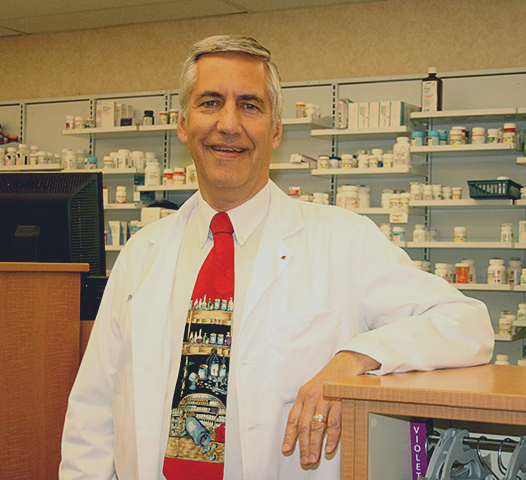OPIOID OVERDOSE EPIDEMIC: A DISCUSSION BETWEEN CDC AND THE KROGER, CO.
Q&A with Kroger’s Mike Menkhaus, R.Ph.

How has Kroger felt the effects of the opioid epidemic on its customers?
Kroger, like all businesses, has witnessed the recent upswing in opioid-related deaths of our customers and friends. A particular concern has been the role played by prescription drugs in this epidemic. Our implementation of a prescription drug monitoring program (PDMP) report review in workflow, with NARxCHECK, is one way we have worked to fight prescription drug diversion and abuse. (NARxCHECK is an analytical tool to facilitate the clinical evaluation of the patient’s past controlled substance usage, and soon will be replaced with a new iteration called NarxCare at www.NarxCare.com.)
What are some innovative approaches Kroger has taken to turn around this epidemic? What ways has patient safety been improving?
Kroger was the first major pharmacy chain to integrate a PDMP report review with workflow. Although it’s very difficult to capture what wasn’t dispensed, our records do indicate that there has been a significant reduction in the dispensing of controlled substance prescriptions in those states in which we have implemented the NARxCHECK PDMP in workflow feature. By comparing the percentage of controlled substance prescriptions dispensed in those states where the feature is enabled to the percentage in states where not enabled, we have found that, instead of a positive growth of 1.25 percent over 2015 dispensing, in states with the feature enabled, we actually saw a decrease in dispensing of 1.12 percent for a total reduction in expected dispensing of nearly 2.4 percent.
What are some of the biggest challenges you have faced in addressing the opioid epidemic in your communities? What have been your biggest successes?
Patient intervention has been a challenge, particularly since corporate guidance has been limited to generalizations. To date, we don’t have the ability to recommend local rehabilitation facilities; however, we hope to soon be able to do so through NarxCare by matching the patient’s zip code with rehabilitation centers in their local area.
Our greatest success has been the reduction of controlled substance prescription dispensing we achieved through the use of NARxCHECK PDMP reports, in workflow, that help simplify the assessment of the patient’s controlled substance usage by our clinicians.
What advice can Kroger offer other large employers to help address the opioid epidemic?
The best advice Kroger can offer is to provide education. Educating associates who provide healthcare about the warning signs and symptoms of opioid abuse is a key first step. Addiction is a real problem, and one that employers can play a key role in addressing by encouraging all healthcare providers to take action and by providing education and help for their own associates. In addition, we strongly encourage companies to offer anonymous help resources to their employees, as Kroger does. This can provide a non-threatening avenue in which to pursue the help employees need.
What kind of information or tools from CDC is useful to Kroger to keep employees and customers healthy and safe?
CDC can serve as a repository for the latest developments in the diagnosis and treatment of opioid addiction and provide resources for both clinicians and the general public. Also, CDC can standardize the tools used in comparing and evaluating the drug therapies across patients on different opioid prescriptions by maintaining a crosswalk of relative potencies. This is done through the publishing of the Morphine Milligram Equivalencies for each opioid-like drug.